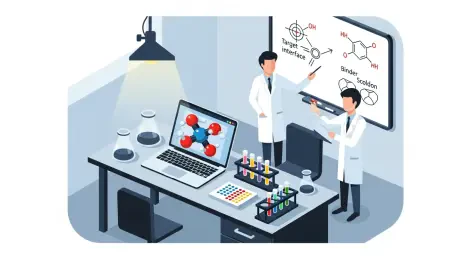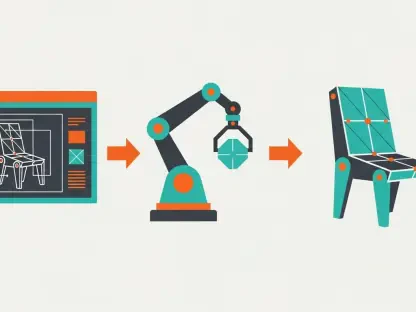When a disease target offers nothing but a flat, slippery surface that laughs at small molecules and shrugs off antibodies, discovery teams usually back away or burn years on expensive guesswork that seldom pays off. BoltzGen, an open-source model from MIT’s Jameel Clinic, steps directly into that void with a claim that it can both predict structural interactions and generate physically plausible binders for those “undruggable” cases—without giving up on state-of-the-art metrics.
The backdrop matters. Earlier entries in the Boltz lineage, Boltz-1 and Boltz-2, sharpened the predictive edge on structure and affinity. BoltzGen keeps that edge but changes the goal: not only judging candidates, but creating them, while honoring real-world chemistry. The shift mirrors a broader trend in biomolecular AI: merging tasks, encoding physics upfront, and tightening loops with wetlabs to boost reliability where data are sparse and stakes are high.
The Pitch
BoltzGen’s premise is disarmingly simple: blend a structure predictor with a binder generator in a single training regime and let them inform each other. The benefit is reach. Instead of bouncing between siloed tools, teams can condition on target context, ask for peptide or protein binders with specific properties, and receive candidates that pass basic reality checks before any assay begins.
What raises the stakes is timing. Open-source tools have been catching up fast, and this model leans into that momentum. With code and weights available, it invites scrutiny and remixing, compressing iteration cycles and putting pressure on proprietary platforms that once relied on algorithmic exclusivity.
How It Works
BoltzGen uses joint objectives to co-train design and prediction, allowing gradients from structure tasks to shape the generator and vice versa. That coupling helps the model generalize on tricky targets, because it learns correlations across tasks that reflect underlying physics rather than dataset quirks. Task conditioning then selects behaviors—affinity emphasis, interface coverage, scaffold preferences—without retraining.
Crucially, those choices do not come at the cost of accuracy. Internal benchmarks indicate that structure-prediction parity is preserved while coverage expands into active design. That balance is the crux: a tool that invents candidates must still read the room with the same acuity as a top predictor.
Unified Design And Prediction
The unified framework treats evaluation signals as training fuel. Binding interface plausibility, learned from prediction tasks, constrains generation; design performance, in turn, refines predictive robustness under shifts. This reciprocity acts like a regularizer, reducing overfitting to familiar pockets and forcing the model to respect geometry that generalizes.
Moreover, multi-task learning introduces controlled conflict. When objectives tug in slightly different directions, the model must reconcile them, which often surfaces deeper, transferable rules. That tends to improve downstream success on novel proteins where shortcuts collapse.
Physics And Chemistry Constraints
BoltzGen bakes in steric, energetic, and sequence-level checks that screen out non-starters during sampling, not after. Side-chain clashes, unsatisfied hydrogen bonds, and egregious electrostatics trigger early course corrections. Lightweight scoring nudges sequences toward plausible folds and interfaces while keeping the generator exploratory.
Wetlab partners shaped these constraints with empirical feedback. Failed designs taught the system when an apparently clever motif would misbehave in buffer, when aggregation risk spikes, or when flexibility kills affinity. That loop tightened the line between theory and practice, making “chemically aware” more than a slogan.
Data And Training
Training data span diverse complexes and binder modalities, with deliberate negative sampling to avoid imprinting on a few celebrity targets. The pipeline down-weights near-duplicates and enforces sequence and structural diversity so that memorization does not masquerade as skill. Distributional robustness is a design goal, not an afterthought.
To push transfer, BoltzGen mixes modalities—peptides, miniproteins, and varying interface types—teaching the model to distill patterns that survive changes in length, scaffold, and context. That breadth is essential for real pipelines, where each program brings a different set of constraints and risks.
Performance And Validation
The team ran a 26-target evaluation panel focused on medically relevant, out-of-distribution problems. The targets were selected to be unlike the training set and to stress the model’s claimed strengths: shallow surfaces, shifting interfaces, and limited prior art. Hard problems, not softball tests.
Testing spanned eight independent labs across academia and industry, with blinded assays and cross-checks to reduce lab-specific bias. Convergence across assay formats—binding, competition, and orthogonal readouts—suggested signal rather than noise. Failure modes still appeared, particularly around conformational dynamics, but controls helped calibrate confidence.
Multi-Target, Multi-Lab
Results were not uniform, yet patterns favored the model’s design choices. Candidates that sailed through physics filters were more likely to validate, and steric sanity correlated with early success. The replication effort also highlighted where constraints should be stricter, such as penalizing flexible loops that destabilize at physiological salt.
Independent validation added social proof. When labs with different protocols reach similar conclusions, claims feel less like cherry-picked victories and more like durable behavior.
Replication And Partners
Industry participation sharpened practical value. Parabilis Medicines prepared to plug BoltzGen into peptide discovery workflows, aligning generation settings with downstream assays and ADME screens. That alignment closed trivial gaps that often derail academic-to-industry handoffs.
Feedback from partners fed straight into model updates, tightening filters and refining task conditioning. The cadence showed a credible path from benchmark trophies to pipeline throughput.
Ecosystem And Business Impact
Open-source release changed the competitive map. When high-grade models arrive in public, the edge shifts toward data quality, wetlab automation, and translational expertise. Service providers can still differentiate, but not by hiding core algorithms; they compete on industrialization—the messy, expensive part that actually moves a candidate forward.
For academics and startups, the barrier to entry dropped. Hypotheses can be tested faster and cheaper, broadening the funnel of early hits. That increase in volume does not guarantee more drugs, yet it improves the odds by letting programs fail smarter and sooner.
Limitations And Risks
Generative wins are not therapeutic wins. Pharmacokinetics, immunogenicity, manufacturability, and long-term stability remain major hurdles that BoltzGen does not claim to solve. Targets with significant conformational drift can still confound both the predictor and the generator.
Benchmarking also needs work. The field lacks standardized, out-of-distribution suites that link model performance to in vivo outcomes. Until those exist, comparisons will remain noisy, and strategic bets will rely on internal validation stacks rather than public leaderboards.
Verdict And Next Steps
BoltzGen delivered a meaningful step beyond prediction by generating binder candidates that held up under diverse assays, and the combination of physics-aware constraints with unified training explained much of that traction. The open release accelerated community learning while raising the bar for proprietary offerings, which now needed to win on execution, not secrecy. The most actionable path forward sat in tighter wetlab integration, automated facilities, and active learning loops that shorten iterate-measure cycles from months to weeks. With clearer OOD benchmarks and richer feedback signals, the model stood to shape a new normal in binder design—credible, testable, and pointed toward the targets that used to stop the show.









